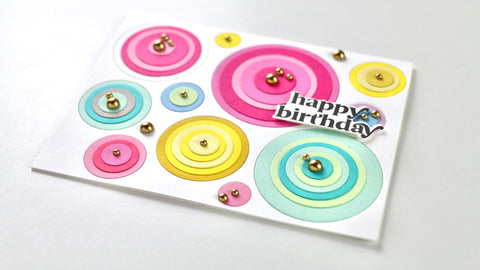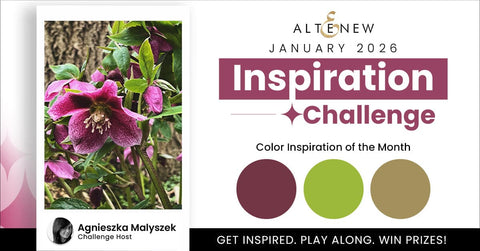How to Choose the Perfect Ink Blending Tool for Your Project
Last Updated: October 28, 2025
How do you choose the best ink blending tool for your paper crafting project? Which one is better, ink blending tool or blending brushes? How do you avoid harsh edges when you do ink blending? If you are looking for answers to these questions, then keep on reading!
What is ink blending?
Ink blending is simply the art of blending two or more inks onto a surface, often to create a beautiful and seamless ombré effect. Ink blending is also used in mixed media art, especially with stencils. You have probably seen the ombré effect in several different artworks and crafts such as painting, handmade cards, album and notebook covers, and even on t-shirts. The combination of two colors, which often produces a third color, is magical, especially when it is seamless and smooth. To achieve seamless blending, you must have a high-quality ink blending tool.

What is an ink blending tool?
As the name suggests, this is a tool used for blending inks. It is typically a small tool with a wood handle on one end and a foam applicator on the other end. The foam applicator can be easily replaced or removed. Most companies sell these foam applicators in packs of 5, 10, or more. The first company to come up with an ink blending tool was Tim Holtz. Their ink blending tool has been around for a while and is a staple in almost every experienced crafter’s stash. It paved the way for some new and modern designs that are available in the market today.
Finding the Best Ink Blending Tool for Your Paper Crafting Projects
Over the years, the artistic way of blending inks has gained popularity and became a massive trend in the world of paper crafting. Nowadays, you can see a vast amount of how-to tutorials on YouTube and ink blending inspiration and ideas on social media channels like Instagram and Pinterest. Just like your other paper crafting supplies, you need to do your research first and find out which ink blending tool suits your needs.
Jennifer McGuire said in her review of ink blending tools, “The tool you use is just as important as the surface you work on and the cardstock you use.” We couldn’t agree more! Choosing the perfect ink blending tool is just half the battle. Here are three things to consider before you start ink blending.
1. Surface - You can have the BEST ink blending tools money can buy, but if the surface you’re working on isn’t smooth, you’re not going to get the best results. That’s why it’s necessary to invest in a high-quality paper crafting mat. Don’t make the mistake of being cheap and just using a piece of paper or cardboard as your work surface. Believe us; it won’t end well. Here are a few things to remember when choosing your crafting mat.
- High quality
- Waterproof
- Non-slip
- Heat-resistant
- Easy to clean
- Stays in place
- Large enough for your desk
- Affordable

Read: An Amazing and Easy Technique to Create Transparency with Ink Blending
2. Cardstock - Now that you’ve got a great work surface, the next thing you need to consider is the cardstock and paper that you use. It goes without saying that you need high-quality cardstock and paper. A regular A2-sized printer paper won’t do. We recommend something smooth and heavyweight, preferably between 80lb to 120lb in weight. This will ensure that the ink will get absorbed well by the cardstock, move freely, and there won’t be any bleeding. If you want to learn more about paper and cardstock in paper crafting, CLICK HERE.
3. Inks - What is ink blending without inks? Of course, you have to choose the right inks for your ink blending tool. Depending on what kind of paper crafting project you are doing or what type of design you are trying to achieve, you can choose from the following inks:
-
Dye Inks - This is also one of the best inks for ink blending. Dye inks are water-based and fast-drying. They are much cheaper than the trendy Distress Inks, and you can use them in a variety of other paper crafting techniques. If you want to learn more about dye inks and other inks for paper crafting, CLICK HERE. Altenew provides a wide range of dye ink colors to choose from, and each color has ink refills available.
-
Distress Inks and Distress Oxide Inks - For most crafters, these are their go-to inks for ink blending, and for a good reason! Distress inks are a mix of water-reactive dye ink and pigment ink. These are dense inks and ink blending with them is a dream. Ink refills for them are also available online in case you run out of ink.
- Mixed Media Inks - These are multi-purpose inks that can be used on lots of porous surfaces, such as paper, fabric, wood, and more. These pigment inks are water-based, acid-free, and archival. While most crafters won’t recommend pigment inks since they are “too wet” to work with, these mixed media inks from Altenew are excellent for ink blending since they sit on top of the cardstock longer.
You don’t need to be highly skilled at ink blending; you just need the right ink blending tools and high-quality paper crafting supplies.
What is the difference between ink blending tools and blending brushes?
While ink blending tools have been around for more than a decade, thanks to the original ones from Tim Holtz, blending brushes are relatively new to the market. Here’s a quick comparison, with some pros and cons, between ink blending tools and blending brushes.
|
Ink Blending Tools |
Blending Brushes |
|
Usually made of wood (or at least the handle is made out of wood) |
Usually made of plastic |
|
Heavier |
Lighter |
|
Shorter/smaller |
Longer (because of the handle) |
|
No caddy (a few brands like Altenew have their own caddy) |
Some come with their own caddy |
|
No cap or cover (a few brands have) |
Some come with a cap |
|
Great for Distress and Distress Oxide Inks |
Great for water-based inks |
|
Great for pigment inks |
Not so great with pigment inks |
|
It comes with a removable and replaceable foam applicator. |
The brush is not removable or replaceable, but it’s easy to wipe off the ink or clean it with water and soap |
|
It is more travel-friendly since you only need two or three and a few foam applicators. |
It’s not very travel-friendly since you’d have to bring many of them if you plan to use various colors. |
|
Usually comes in 1-3 sizes only |
Comes in a wide range of sizes |
|
You need to tap off excess ink before ink blending to avoid harsh edges and lines. |
The brushes are dense and tightly packed, so even if you don’t tap off the excess ink, you can avoid harsh edges and lines. |
|
Usually sold individually, and you have to buy the foam applicators separately |
Usually sold in sets (3-10) in a variety of sizes |

How to choose the perfect ink blending tool for your paper crafting project is all up to you. Every crafter has their own preference and style. Some prefer ink blending tools, while others are more comfortable with blending brushes. If you want to try both, then go for it!
FUN FACT! Altenew’s Ink Blending Tool is a combination of both ink blending tools and blending brushes. While it has the design and features of a typical ink blending tool, it has the soft and fine bristles of blending brushes. It also comes in two sizes, the large one and the small ones, which are similar to finger daubers.
At the end of the day, it’s not about how fancy, how popular, or how expensive your ink blending tool is; it’s about a combination of things - your work surface, cardstock, inks (and ink refills!), and other paper crafting tools in your stash.
In This Article
More Crafty Reads & Inspirations
-

Starting 2026 With a Clean Slate and Using Up Leftovers
-

January 2026 Inspiration Challenge
-

Simple Tips To Bring Your Die Cut Florals To Life - A Touch of Sparkle With Carissa Wiley
-

3 Secrets for No-Outline Watercoloring: The Art of the Disappearing Line | Perfect Pairings with Jaycee
-

Card Ideas that Symbolize New Beginnings















